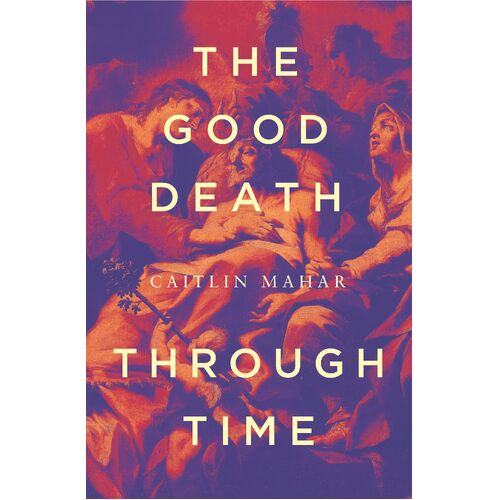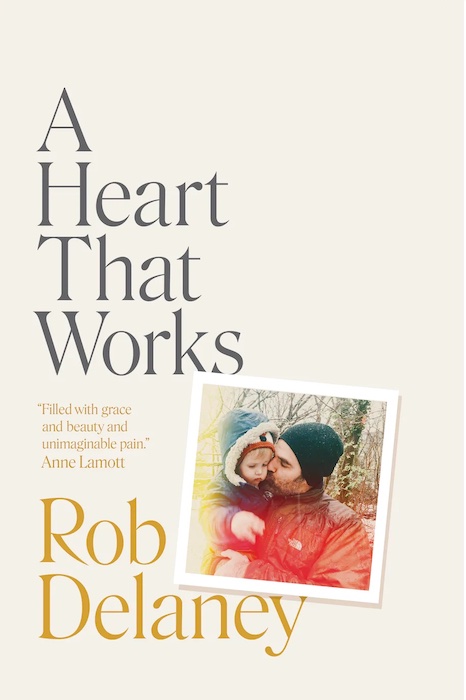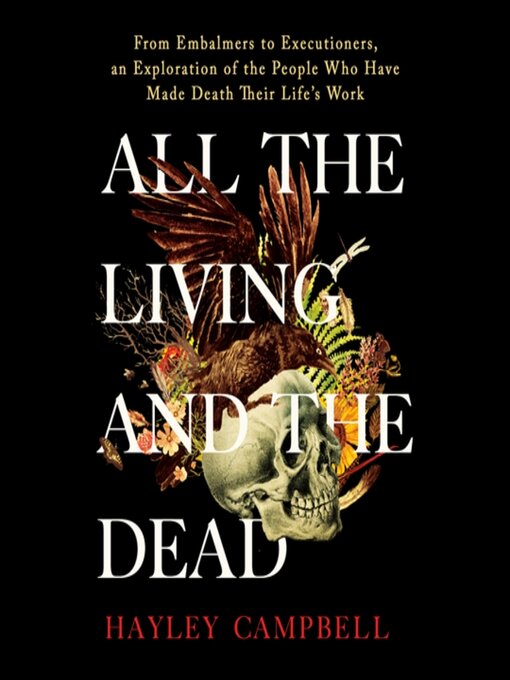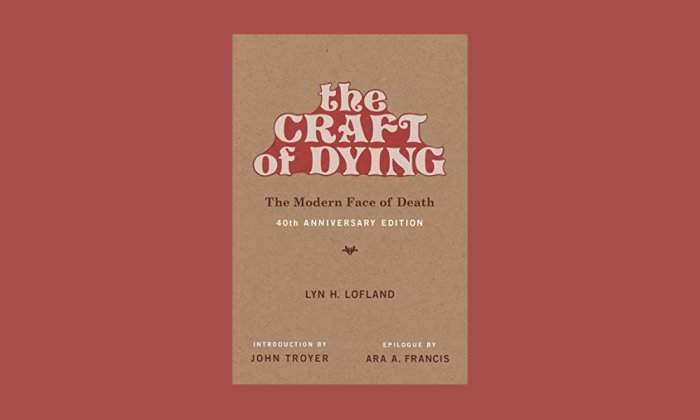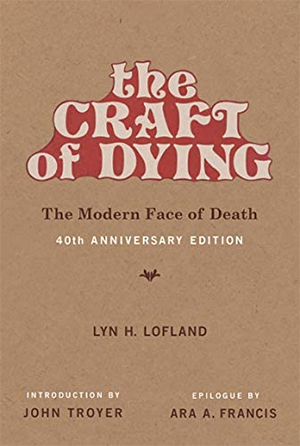— Instruction manuals for living written by the dying
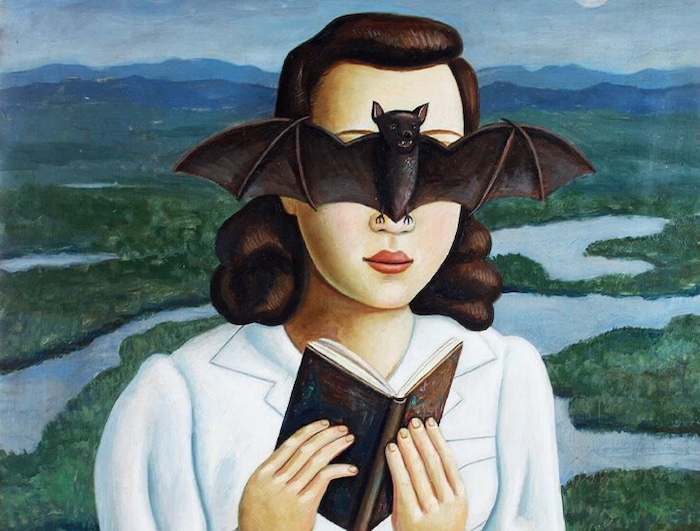
By Kristen Martin
Adina Talve-Goodman lived with an awareness of her own mortality that most of us will never approximate. Born with a single-ventricle heart and pulmonary atresia—a condition where the valve that controls blood flow from the heart to the lungs doesn’t form—she had two surgeries in her first week of life alone. By four, she had undergone two open-heart operations; by twelve, she was in heart failure. “I was a happy kid even though I did not know what wellness felt like,” Talve-Goodman explains. After spending nearly two years on the waiting list for a new heart—a process she describes as “an exercise in how close you can get to death”—she received a transplant in 2006, at the age of nineteen. With her new heart, she adjusted to blood that coursed quickly through her body, pinking her previously pallid cheeks, affording her energy and strength she had never before known.
Talve-Goodman dreamed of publishing a collection of essays exploring her experience of chronic illness and approaching the brink of death, informed by critical theories of embodied difference, suffering, and disability. Eleven years after her heart transplant, when she was drafting those essays in the University of Iowa’s nonfiction MFA program, she was diagnosed with a rare form of lymphoma caused by the immunosuppressants that kept her body from rejecting its new heart. She died six months later, in January 2018, at thirty-one.
Now, Talve-Goodman’s collection is here, though it is not the book she hoped would be her debut. Your Hearts, Your Scars brings together seven essays, all but one unfinished at the time of her death. In the introduction, her sister Sarika describes the collaborative process behind the book, one that its author did not take part in. “When Adina’s cancer treatments were starting not to go well, she said to me with a sadness and softness that she hadn’t even gotten to publish a book,” Sarika writes. “Of course she would, I said . . . I wish I had responded differently in that moment of openness. Maybe we could have talked about what she had wanted and worked on it together.” Instead, after Talve-Goodman died, her sister read and organized everything she had ever written and compiled a manuscript. Together, Talve-Goodman’s parents, both rabbis; the editorial team she had worked with at One Story for six years (Hannah Tinti, Patrick Ryan, and Maribeth Batcha); and her best friend since childhood, the comedian Jo Firestone, edited her words into “a book made out of love and grief.”
Books like Talve-Goodman’s bring us visions of death, but they do not bring us any closer to understanding it.
The essays that make up Your Hearts, Your Scars come in at just over one hundred pages and are rooted more firmly in the personal than the critical: Talve-Goodman writes about attending a summer camp for teenage transplant recipients in San Diego, before she got her new heart, where she met kids who “carr[ied] the weight of dead donors”; about the Thanksgiving when she held her old heart in her hands, having requested to take it home from the hospital; about realizing that she “might never feel as if being healthy and having energy is normal.” The essays are suffused with compassion and hope, but given the circumstances of publication, the overall effect is achingly bittersweet.
In this juxtaposition of the author’s clear-eyed appreciation for life that comes with being close to death and the reader’s ever-present awareness that the author is now, in fact, dead, Your Hearts, Your Scars joins a lineage of instruction manuals for living written by the dying. The most recent spate of such books hit shelves in the years leading up to the pandemic, before death became all too present and we shunned confronting mortal reality in favor of smarmy calls for resilience. The neurosurgeon Paul Kalanithi’s 2016 memoir When Breath Becomes Air, written in the months leading up to his death of lung cancer at thirty-seven, kicked off a renewed interest in posthumously published meditations on death, hitting the top of the New York Times bestseller list and garnering critical acclaim. The next year brought Cory Taylor’s Dying, which Barack Obama named as one of his favorite books that year, and Nina Riggs’s The Bright Hour, which the Washington Post hailed as “this year’s When Breath Becomes Air.” In 2019, Julie Yip-Williams’s The Unwinding of the Miracle, adapted from a blog she kept called My Cancer Fighting Journey, joined the pantheon, a little less than a year following her death at forty-two. It, too, drew comparisons to When Breath Becomes Air (Kalanithi and Yip-Williams shared an editor at Random House).
What unites all these posthumous memoirs is the hunger we bring to them as readers. We expect koan-like wisdom on what matters in life, an enlightened perspective gained from being at or near the end of it. We expect to come away transformed, in possession of the same moral clarity that their authors have achieved by dying. Back cover blurbs demand that readers heed the authors’ lessons: Atul Gawande—the author of Being Mortal, a book about end-of-life medicine—claims that “Dr. Kalanithi’s memoir is proof that the dying are the ones who have the most to teach us about life.” Ann Hood says Cory Taylor’s Dying “should be required reading for all of us.”
The ultimate lesson we hope to learn from these books? How to live meaningfully while knowing that life must end, and when it does end, how to face death with equanimity. Put simply, we want to learn how to die.
I have lived most of my life preoccupied with mortality, wishing that I could understand what it is like to die, to be dead. When I was twelve, my mother died of lung cancer; my father died of prostate cancer two years later. In the decades since, I have stopped believing in an afterlife—my parents are nowhere but in memory. Instead, I have tried to understand their deaths in a way I couldn’t when they were dying, and tried to understand death more broadly, through reading literature published from beyond the grave. Books like Talve-Goodman’s bring us visions of death, but they do not bring us any closer to understanding it.
Instead of this year’s When Breath Becomes Air, perhaps a maudlin blurber might call Your Hearts, Your Scars this year’s The Opposite of Loneliness—so far, this century’s paradigmatic work by an author who died before fully developing her craft. The book’s very existence fetishizes the idea that those who die young are especially insightful and worthy, which is in turn part of an impulse to make trite meaning of a life cut short.
Like Talve-Goodman, Marina Keegan was not consciously composing a manuscript to be read posthumously. She died in a car accident days after her graduation from Yale. The 2014 book— put together by Keegan’s family, friends, and her mentor at Yale, Anne Fadiman—takes its title from a piece Keegan wrote for commencement, which developed a tragic weight after her death because its pep talk no longer applied to her: “What we have to remember is that we can still do anything. We can change our minds. We can start over . . . The notion that it’s too late to do anything is comical. It’s hilarious. We’re graduating college. We’re so young.” The Opposite of Loneliness, which hung around the New York Times bestseller list for weeks, drew praise for its “youthful optimism, energy, honesty, and beyond-her-years wisdom.”
Talve-Goodman’s wisdom, on the other hand, comes from having experienced what it was like to die before she died, a fact that colored her image of the future. Though each essay has an undercurrent of brightness, Your Hearts, Your Scars is not a feel-good look at sickness and dying. (This jibes with the fact that the book is out from Bellevue Literary Press, an indie publisher with roots in the historic New York City public hospital that focuses on the intersection of the arts and sciences and exploring the human condition.) What Talve-Goodman’s loved ones have ultimately given readers in publishing her words is a perspective on chronic illness and survival that pushes back on the idea that people who suffer must inspire us or teach us gratitude.
When she died, Talve-Goodman was on the cusp of a literary career; she had only published one piece, an essay titled “I Must Have Been That Man,” which won the 2015 Bellevue Literary Prize in nonfiction. (Coincidentally, Fadiman was the contest’s judge.) That essay, which opens Your Hearts, Your Scars, recounts how Talve-Goodman traversed from illness to wellness forever marked by her near-death, a theme woven throughout the collection. As with many of the other pieces, “I Must Have Been That Man” is built around an incident that happened when Talve-Goodman was in college in St. Louis. She writes of being locked out of her apartment on a rainy day about a year after her heart transplant and coming across a man in the street who had fallen out of his electric wheelchair. It’s a story about the difference between compassion and pity, but the crux is in a reflective moment toward the beginning:
When I listed [for transplant], my parents, both rabbis, told me a story from the Talmud about a rabbi who goes to visit three sick men and each time the rabbi asks, “Is your suffering dear to you?” “That’s the whole story,” they’d explain, “and it’s the question that’s important.” I took it to mean this: When the time comes, will you be able to live without the heart defect that always made you special and strong? Will you be able to face wellness and normalcy?
Talve-Goodman realizes that her suffering is dear to her, at least, she writes, “a little bit.”
Reading the essays that follow, I thought about how the popularity of death memoirs speaks to how the suffering of others is dear to us. In “Your Hearts, Your Scars, Zombies,” a meditation on the cultural figure of the zombie that her sister notes is the closest to the melding of the personal and the critical that she aspired to publish, Talve-Goodman confronts the appetite well people have for stories about sickness: “What, then, for an illness narrative? Perhaps that I am what you make of me—I live this way, a different body, a body of hybridity, to mean something to you, to your experiences, to practice your empathy, to fetishize, even to ‘inspire.’” It’s a refreshing moment of reprimand against a tendency to read illness—or death—narratives with a posture of self-serving pity and a desire to extract encouragement.
And still, reading Your Hearts, Your Scars, I found myself asking for more than its author wanted to—or could—give. I wished that Talve-Goodman had gone deeper on death—that she had taught me more about how to die. In the collection’s final piece, “Thank God for the Nights That Go Right,” Talve-Goodman lingers on what it felt like to almost die, as opposed to having made it out on the other side, feeling like what she at one point describes as “death in drag.” She writes of being tired, being desperate, being close to giving up the night before she learned that she would receive her transplant. “I always thought dying would feel worse,” Talve-Goodman writes. “I thought there would be more pain, I thought death would be clear.” What did dying feel like? I wrote in the margin, wanting to vicariously understand through reading something that literature cannot deliver.
After reading Your Hearts, Your Scars, I revisited Kalanithi’s When Breath Becomes Air to remind myself of why all these posthumous memoirs get stacked up against it, and why publishers have tried to recreate its success: it actually does meditate cogently and vigorously on what makes life meaningful, even and especially with the acute knowledge of imminent death.
But Kalanithi didn’t start that line of inquiry in his final months—it was a lifelong pursuit, one he began while studying literature and biology in college in an effort to understand both “the life of the mind” and “the rules of the brain.” He chose medicine because he felt it was where “biology, mortality, literature, and philosophy intersect[ed],” and because he believed it would allow him to directly “forge relationships with the suffering, and to keep following the question of what makes human life meaningful, even in the face of death and decay.” In performing neurosurgery, working on and in the organ that makes us individuals—the brain—Kalanithi further challenged himself to confront, along with his patients, “what makes life meaningful enough to go on living.” This was a man who dedicated his entire career to grappling with the fundamental questions of life.
There is value in reading death memoirs, if we can take them on their own terms.
Ironically, within When Breath Becomes Air, Kalanithi makes the argument that literature cannot teach us how to die—something I missed in my first reading, and that the market for books like Kalanithi’s has chosen to ignore. Early on, he writes, “I had spent so much time studying literature at Stanford and the history of medicine at Cambridge, in an attempt to better understand the particularities of death, only to come away feeling like they were still unknowable to me.” Later, after facing death through his patients—which taught him the limits of accessing someone else’s experience—and after receiving his own diagnosis of stage IV lung cancer, Kalanithi turns back to books, reading “anything by anyone who had ever written about mortality.” He tells his oncologist that he’s doing so, “trying to find the right perspective.” She replies, “I’m not sure that’s something you can find by reading about it.”
What Kalanithi ultimately learns is that he must decide for himself what he values in life, what makes his own life worth living, where he finds meaning. We each have to do this hard work when the time comes. Even with all of the meditative homework Kalanithi completed ahead of time, it wasn’t until he was dying that he could truly answer these questions, and his answers shifted along with his prognosis, his symptoms, his energy.
But still, there is value in reading death memoirs, if we can take them on their own terms. When Breath Becomes Air cannot prepare us to face our own mortality or bring us closer to comprehending the purpose of life or what it means to die. It can, though, allow us inside one man’s personal and philosophical end-of-life reckoning, which may in turn spur our own reflections. Similarly,Your Hearts, Your Scars cannot be an instruction manual for “living each day as a gift,” as the back cover claims that Talve-Goodman did. It can be a slim volume of words about coming-of-age that a young writer never got to polish to her satisfaction, shared as part of her legacy.
Complete Article ↪HERE↩!




